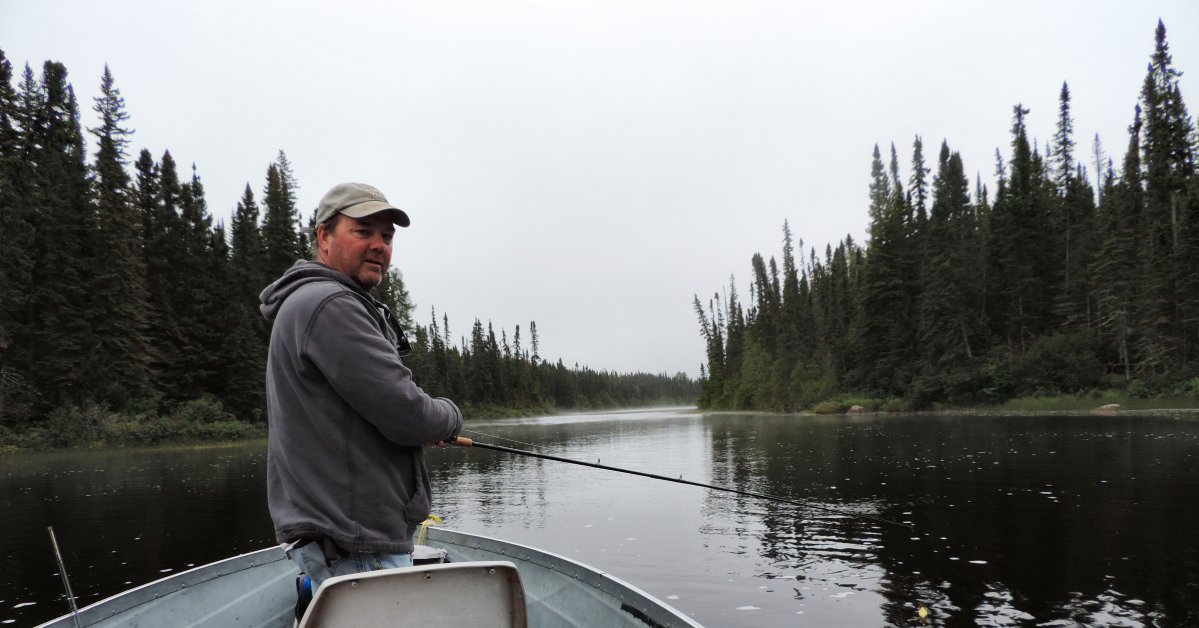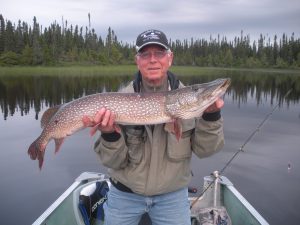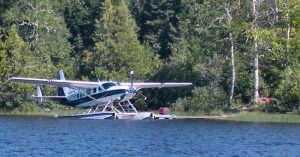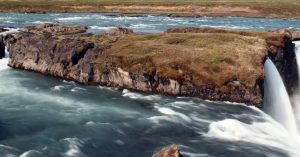Ultimate Guide to Pike Fishing: Techniques, Tips, and Gear…
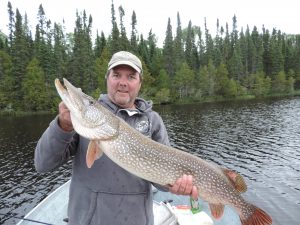 Welcome to the Ultimate Guide for Pike Fishing: Expert Techniques, Tips, and Gear! If you’re an angler seeking the thrill of tangling with one of freshwater fishing’s most formidable predators, you’re in for a treat. This comprehensive guide is your gateway to mastering the art of pike fishing, covering everything from deciphering their behavior and preferred habitats to choosing the perfect gear and techniques to boost your success rate. Whether you’re a newbie angler keen on learning the essentials or a seasoned pro aiming to polish your skills, this guide is your go-to resource. So, grab your fishing gear and prepare for an unforgettable journey into the realm of pike fishing!
Welcome to the Ultimate Guide for Pike Fishing: Expert Techniques, Tips, and Gear! If you’re an angler seeking the thrill of tangling with one of freshwater fishing’s most formidable predators, you’re in for a treat. This comprehensive guide is your gateway to mastering the art of pike fishing, covering everything from deciphering their behavior and preferred habitats to choosing the perfect gear and techniques to boost your success rate. Whether you’re a newbie angler keen on learning the essentials or a seasoned pro aiming to polish your skills, this guide is your go-to resource. So, grab your fishing gear and prepare for an unforgettable journey into the realm of pike fishing!
Understanding Pike Behavior and Habits
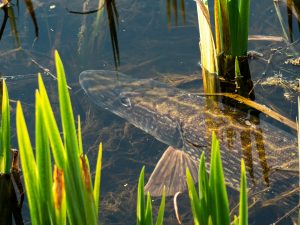
Habitat Preferences: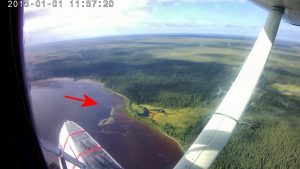
Northern Pike are highly adaptable and can thrive in a variety of freshwater habitats, including lakes, rivers, reservoirs, and even brackish waters. This adaptability allows them to be found in diverse environments across a wide geographic range, making them a popular target for anglers. Understanding their habitat preferences and behavior can greatly enhance your pike fishing success.
Northern Pike are known for their ability to inhabit a range of freshwater environments. They can be found in:
Lakes: From small ponds to large, deep lakes, pike thrive in still waters where they can find ample prey and cover. They are particularly abundant in eutrophic lakes, which are rich in nutrients and support dense vegetation and diverse fish populations.
Rivers: Pike are also common in rivers, especially in slower-moving sections where they can find suitable cover. They often inhabit backwaters, oxbows, and areas with reduced current where they can hunt more efficiently.
Reservoirs: Man-made reservoirs provide ideal habitats for pike due to their often complex structure, including submerged timber, rocky areas, and varied depths. These environments can support large pike populations.
Brackish Waters: Northern Pike can even adapt to brackish waters, such as estuaries and coastal marshes, where freshwater and saltwater mix. Their ability to tolerate a range of salinities allows them to exploit these unique habitats.
Preference for Abundant Cover
Pike are ambush predators that rely heavily on cover to successfully hunt their prey. They prefer areas with abundant cover where they can remain hidden while waiting to strike. Key types of cover include:
Submerged Vegetation: Weed beds and other aquatic vegetation provide excellent cover for pike. The dense plant life offers both a hiding place and an abundant food source, as many prey species also inhabit these areas. Pike will often patrol the edges of weed beds, ready to dart out and capture passing prey.
Fallen Trees and Timber: Submerged logs, fallen trees, and other woody debris create ideal hiding spots for pike. These structures break up the pike’s silhouette, making them less visible to their prey. Fishing around these structures with weedless lures or live bait can be highly effective.
Rocky Structures: Rock piles, boulder fields, and rocky shorelines are also favored by pike. The irregular surfaces and crevices provide excellent concealment, and the rocks attract prey species. Pike will often hold close to these structures, especially if they are near deeper water or drop-offs.
Behavior and Adaptations
Pike have several adaptations that make them effective predators in these varied habitats. Their elongated bodies and sharp teeth are designed for sudden bursts of speed and powerful strikes. Their ability to remain motionless for extended periods allows them to ambush prey with minimal effort.
Camouflage: Pike have a mottled coloration that helps them blend into their surroundings. This camouflage is especially effective in weedy or rocky environments, where their bodies can become nearly invisible to unsuspecting prey.
Ambush Tactics: Rather than chasing down their prey, pike prefer to lie in wait and ambush their targets. This hunting strategy conserves energy and increases their chances of a successful capture. They use their acute vision to detect movement and their powerful burst of speed to close the distance quickly.
Temperature Preferences: Pike are ectothermic, meaning their body temperature is regulated by their environment. During different seasons, they will seek out water temperatures that are optimal for their metabolism. In the summer, this might mean deeper, cooler waters, while in the spring and fall, they may be found in shallower areas that warm up quickly.
Fishing Strategies
To effectively target Northern Pike in these diverse habitats, anglers should adapt their strategies based on the specific environment and time of year.
Lakes and Reservoirs: Focus on areas with dense vegetation, such as weed beds, and structures like submerged logs and rocky outcrops. Use lures that can navigate through cover, such as spinnerbaits, jerkbaits, and soft plastics.
Rivers: Target slower-moving sections, backwaters, and areas with reduced current. Look for pike around submerged timber and along the edges of weed beds. Crankbaits and live baits can be particularly effective in these conditions.
Brackish Waters: When fishing in estuaries and coastal marshes, seek out areas where freshwater inflows mix with saltwater. These transitional zones often attract a variety of prey species, making them ideal hunting grounds for pike. Use lures that mimic the local baitfish and adjust your retrieval speed based on water conditions.
By understanding the diverse habitats that Northern Pike can inhabit and their preference for abundant cover, anglers can tailor their approach to effectively target these formidable predators. Whether fishing in lakes, rivers, reservoirs, or brackish waters, being aware of the pike’s behavior and habitat preferences will lead to more successful and rewarding fishing experiences.
Feeding Behavior:
Northern Pike are opportunistic feeders and will prey on a wide range of aquatic creatures, including fish, frogs, crayfish, and small mammals. They use a sit-and-wait hunting strategy, patiently lurking in ambush positions before striking with lightning speed to capture unsuspecting prey. Pike are known to exhibit aggressive feeding behavior, often striking with explosive force to immobilize their prey.
Seasonal Patterns:
Pike behavior can vary significantly depending on the season and environmental conditions. In spring, pike are typically more active as they emerge from their winter lethargy and begin actively feeding in preparation for spawning. During the summer months, pike may seek out cooler, deeper waters to escape the heat, while in autumn, they may move into shallower areas to feed before winter sets in. In winter, pike may become less active and seek out deeper, slower-moving waters where they can conserve energy.
Reproductive Cycle:
Northern Pike spawning typically occurs in early spring when water temperatures reach a suitable range of around 40-50°F (4-10°C). During spawning, female pike release their eggs in shallow, weedy areas, where they are fertilized by male pike. After spawning, pike may exhibit post-spawn lethargy as they recover from the rigors of reproduction.
Territorial Behavior:
Northern Pike are solitary predators and often exhibit territorial behavior, particularly in areas with limited food resources. Larger pike may establish dominance over specific territories, aggressively defending their hunting grounds from intruders. Understanding the territorial behavior of pike can help anglers identify prime fishing spots and target trophy-sized individuals.
Best Locations for Pike Fishing
Lakes and Large Reservoirs
Lakes and large reservoirs are prime habitats for Northern Pike. These bodies of water provide ample space and a diverse range of habitats that pike prefer. Look for:
- Weed Beds: Pike often lurk around dense weed beds where they can hide and ambush prey. Target the edges and openings within the weed beds, using weedless lures like spinnerbaits and soft plastics to avoid snagging.
- Submerged Structures: Fallen trees, submerged timber, and rocky outcrops attract pike seeking cover and ambush points. Cast around these structures with crankbaits and jerkbaits to entice strikes from hiding pike.
- Drop-offs and Points: Pike frequently patrol drop-offs and points where shallow water quickly transitions into deeper areas. These structures provide natural feeding zones and can be effectively fished with deep-diving crankbaits and jigs.
Rivers and Streams
Rivers and streams offer dynamic habitats for pike fishing, with varying currents and depths that influence pike behavior. Focus on:
- Slower Current Areas: Pike often congregate in slower-moving sections of rivers, such as backwaters, eddies, and oxbows. Look for submerged logs and vegetation where pike can lie in wait for passing prey. Use jigs and live bait to target these areas effectively.
- Rocky Shorelines: Rocky shorelines provide ideal cover and ambush points for pike. Cast along the shoreline with crankbaits and jerkbaits, retrieving them close to the rocks to trigger strikes from pike hiding in the crevices.
- Bridge Pilings and Docks: Structures like bridge pilings and docks create shade and attract baitfish, making them hotspots for predatory fish like pike. Use swimbaits and topwater lures to fish around these structures, varying your retrieval speed to entice strikes.
Brackish and Coastal Waters
In coastal regions, pike can be found in brackish waters where freshwater meets saltwater. Target:
- Estuaries and Marshes: These transitional zones provide a mix of freshwater and saltwater habitats, attracting a variety of prey species. Look for channels and tidal creeks where pike can hunt baitfish. Use versatile lures like spoons and soft plastics to adapt to changing water conditions.
- Mangrove Shorelines: Mangrove forests offer intricate root systems and submerged branches that provide ideal cover for pike. Fish along the edges of mangrove shorelines with weedless lures and live bait to navigate through the dense vegetation.
Highland Lakes and Reservoirs
In mountainous regions, highland lakes and reservoirs provide unique opportunities for pike fishing. Look for:
- Submerged Structures: Similar to lowland reservoirs, highland lakes feature submerged timber, rock formations, and drop-offs that attract pike. Use deep-diving crankbaits and jigs to explore these deeper areas where pike may be holding.
- Shallow Bays and Inlets: Shallow bays and inlets in highland lakes can warm up quickly, attracting baitfish and pike seeking warmer temperatures. Fish with shallow-running crankbaits and spinnerbaits around these areas during early mornings and evenings when pike are most active.
Essential Gear and Equipment for Pike Fishing
When heading out for a day of pike fishing, having the right gear and equipment can make all the difference. Here’s a rundown of the essential gear you’ll need:
Fishing Rod:
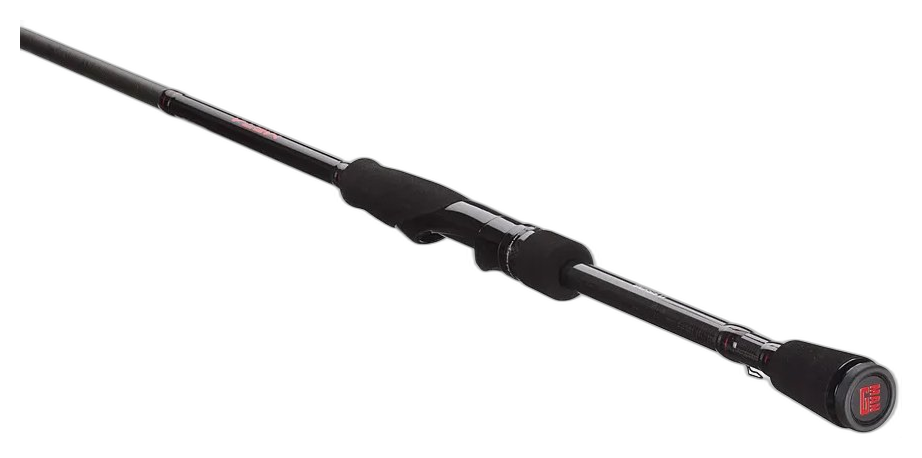
A medium to heavy-action fishing rod in the 6 to 7-foot range is ideal for pike fishing. Look for a rod with enough backbone to handle the powerful strikes and strong runs of pike, yet with enough sensitivity to feel subtle bites.
Fishing Reel:
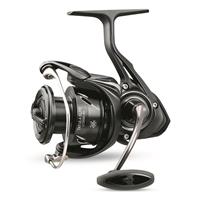
Pair your fishing rod with a quality spinning or baitcasting reel that matches the rod’s specifications. Ensure the reel has a smooth drag system and a high line capacity to handle the hard-fighting nature of pike.
Fishing Line:
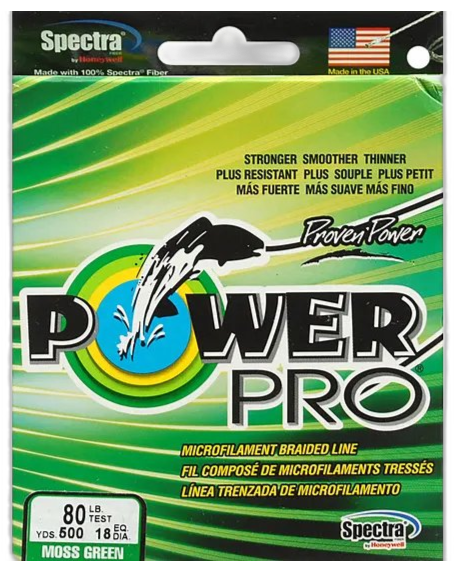
Opt for a durable and abrasion-resistant fishing line in the 12 to 20-pound test range. Monofilament, fluorocarbon, or braided lines are suitable choices for pike fishing, depending on your personal preference and fishing conditions.
Terminal Tackle:
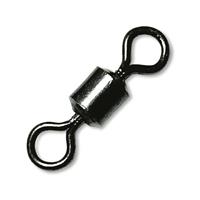
Stock up on a variety of terminal tackle, including hooks, swivels, and leaders. Use strong and sharp hooks in sizes ranging from 2/0 to 5/0, depending on the size of the baitfish you’re using and the size of the pike you’re targeting. Wire leaders are essential to prevent pike from biting through your line.
Lures and Baits:
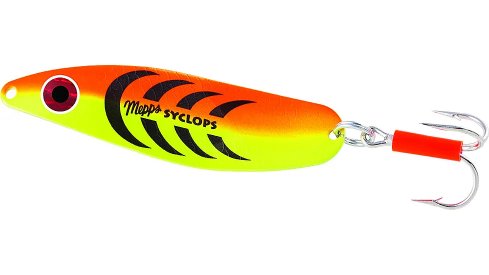
Carry a selection of pike-specific lures and baits in your tackle box. Effective lures for pike fishing include spoons, spinnerbaits, crankbaits, and swimbaits. Live baits such as large minnows, suckers, or shiners are also effective for enticing big pike.
Net and Landing Tools:
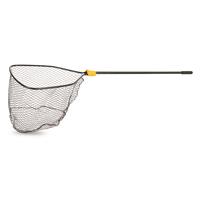
A sturdy landing net with a wide opening and a long handle is essential for safely landing and releasing pike. Additionally, carry a pair of long-nosed pliers or a jaw spreader to safely unhook pike and minimize handling stress.
Protective Gear:
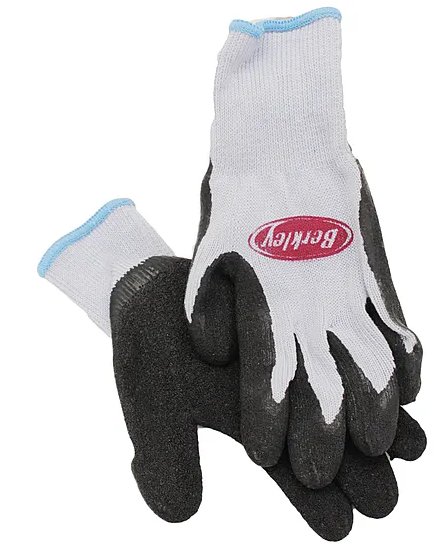
Protect yourself from the sharp teeth and dorsal fins of pike by wearing a pair of fish handling gloves. These gloves provide added grip and protection when handling fish, reducing the risk of cuts and puncture wounds.
Fishing Apparel:
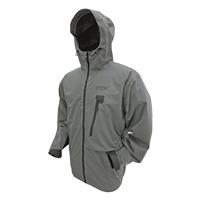
Dress appropriately for the weather conditions and wear clothing that provides sun protection and keeps you comfortable throughout the day. Consider wearing polarized sunglasses to reduce glare and improve visibility when spotting fish.
- StrikeMaster Battle Jacket, Vintage, L, SBJV-L

- Price: $155.99
- Rapala Rain Jacket, Grey Red, XXL, RR1J-XXL

- Price: $131.99
- Rapala Rain Jacket, Grey Red, Large, RR1J-L

- Price: $126.99
- Rapala Rain Jacket, Grey Red, Extra Large, RR1J-XL

- Price: $121.99
- ONYX Hydromax Jacket / Pants

- Price: $89.99
- ONYX Pike Paddle Sports Life Jacket

- Price: $79.99
- ONYX Hydromax Jacket / Pants

- Price: $77.99
- ONYX Essential Jacket / Pants

- Price: $71.99
- ONYX Life Vests

- Price: $65.99
- ONYX Essential Jacket / Pants

- Price: $63.99
- Crystal River Fly Fishing Vest - X Large 138776

- Price: $39.99
Selecting the Right Lures and Baits for Pike
When aiming to catch trophy-sized pike, it’s wise to opt for larger baits that can attract the bigger fish. Large pike tend to go for bigger prey, so using hefty swimbaits, jerkbaits, or even live baitfish can significantly boost your chances of landing a giant. Although you might experience fewer bites, the reward of catching a real trophy pike makes the wait worthwhile.
Lures:
Pike are 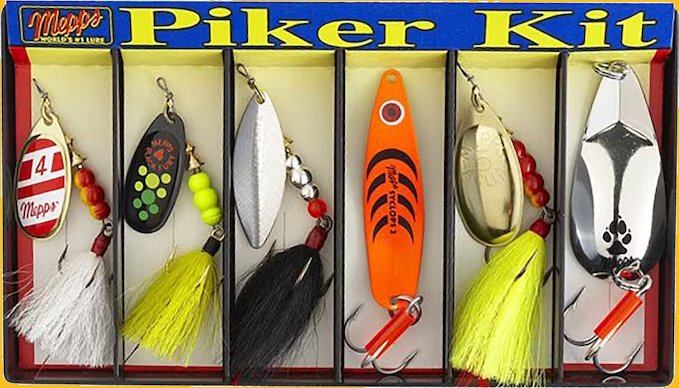 attracted to a variety of lures, and selecting the right one depends on factors such as water conditions, time of year, and the behavior of the fish. Here are some effective lure options for targeting pike:
attracted to a variety of lures, and selecting the right one depends on factors such as water conditions, time of year, and the behavior of the fish. Here are some effective lure options for targeting pike:
Spoons:
Spoons are classic pike lures known for their ability to mimic the erratic movement of injured baitfish, making them highly effective for attracting these predatory fish. These lures come in a variety of sizes, shapes, and colors, allowing anglers to select the perfect spoon for their specific fishing conditions and target pike.
One of the standout features of spoons is their versatility. The larger, flashy spoons are particularly effective for targeting trophy-sized pike. These big, gleaming lures catch the light as they move through the water, creating flashes that can attract pike from a distance. The reflective surface of the spoon, combined with its unpredictable wobbling action, mimics the appearance and behavior of a wounded baitfish, which is irresistible to predatory pike.
To maximize the effectiveness of spoons, it is crucial to master the retrieve technique. A jerking motion during retrieval can make the spoon dart erratically, further simulating the behavior of an injured fish. This jerky movement triggers the predatory instincts of pike, often resulting in aggressive strikes. Varying the speed and intensity of the jerks can also help find the right action that pike in your fishing area respond to best.
Another advantage of spoons is their ability to be fished at different depths. By allowing the spoon to sink before beginning the retrieve, anglers can target pike that are holding deeper in the water column. Conversely, a faster retrieve near the surface can entice pike that are actively hunting in shallower waters. This depth versatility makes spoons suitable for various fishing environments, from deep lakes to shallow rivers.
When selecting spoons, consider the water clarity and light conditions. In clear water, natural colors and smaller spoons might be more effective, as they closely resemble the local baitfish. In murky or stained water, larger, more brightly colored spoons can help pike locate the lure more easily. Metallic finishes, such as gold or silver, are particularly effective in reflecting light and creating the flash that attracts pike.
The shape of the spoon also plays a role in its action. Longer, narrower spoons tend to have a tighter wobble and are ideal for faster retrieves, while wider spoons have a broader, more erratic action suited for slower retrieves. Anglers should experiment with different shapes to determine which action triggers the most strikes in their specific fishing conditions.
In addition to their effectiveness, spoons are relatively easy to use, making them a great choice for both novice and experienced anglers. They are durable and can withstand the aggressive strikes and powerful runs of large pike, ensuring that they remain a reliable tool in your tackle box.
In summary, spoons are an essential lure for any pike angler due to their ability to mimic injured baitfish, their versatility in size, shape, and color, and their effectiveness at various depths. By mastering the retrieve technique and selecting the right spoon for the conditions, anglers can significantly increase their chances of landing trophy-sized pike.
- Northland Jaw-Breaker Spoons

- Price: $10.29
- Northland Jaw-Breaker Spoons

- Price: $10.49
- Northland Jaw-Breaker Spoons

- Price: $10.29
- Northland Jaw-Breaker Spoons

- Price: $10.29
- Northland Jaw-Breaker Spoons

- Price: $10.29
- Northland Jaw-Breaker Spoons

- Price: $10.29
Spinnerbaits:
Spinnerbaits are versatile lures that combine a spinning blade with a skirted jig, making them a favorite among anglers targeting pike. The spinning blade is a key feature, as it generates vibrations and a reflective flash that can easily catch the eye of pike, even in murky or stained water. This makes spinnerbaits particularly effective in conditions where visibility is low.
One of the biggest advantages of using spinnerbaits is their ability to be fished in various environments. For instance, they excel in shallow, weedy areas where pike often lurk in search of prey. The design of the spinnerbait allows it to move through vegetation with minimal snagging, making it perfect for these weedy spots. The vibrations and flash created by the blade can penetrate the cover and draw pike out from their hiding spots.
Additionally, spinnerbaits are highly effective along rocky shorelines. The irregular movements and changes in depth along these shorelines create ideal ambush points for pike. By casting a spinnerbait parallel to the shore and retrieving it at a steady pace, you can mimic the movement of baitfish, making it an irresistible target for lurking pike.
Another benefit of spinnerbaits is their ability to be retrieved at various speeds. A slow, steady retrieve can be effective in cooler water when pike are less active, while a faster retrieve can provoke aggressive strikes in warmer water when pike are more active and willing to chase down prey. This versatility in retrieval speed allows anglers to adjust their approach based on the conditions and the behavior of the fish.
For best results, consider experimenting with different blade types and sizes. Willow blades produce a tighter, faster vibration and are great for clear water, while Colorado blades create a larger thump and are better suited for murky water. Double-bladed spinnerbaits can offer a combination of both, providing maximum attraction.
Overall, spinnerbaits are an essential part of any pike angler’s tackle box. Their versatility, ability to attract pike in various conditions, and effectiveness in different environments make them a reliable choice for both novice and experienced anglers.
Crankbaits:
Crankbaits are highly effective lures for covering large areas of water quickly and triggering reaction strikes from pike. Their design allows them to be retrieved at various speeds, diving to different depths, and creating an enticing action that pike find hard to resist. Here’s how to make the most of crankbaits when targeting pike:
Crankbaits with a wide wobble are particularly effective for pike fishing. This wide wobble mimics the erratic movements of injured prey fish, making the lure appear vulnerable and easy to catch. Additionally, crankbaits that produce a rattling noise add an auditory element to the visual attraction, enhancing their ability to draw in pike. The combination of sight and sound can trigger aggressive strikes, even from pike that are not actively feeding.
One of the key advantages of crankbaits is their ability to dive to specific depths, allowing anglers to target pike that are holding at different levels in the water column. Experimenting with diving depths is crucial to finding where the pike are most active. For example, in cooler water temperatures, pike might be found deeper, requiring deep-diving crankbaits to reach them. Conversely, in warmer conditions or during feeding periods, pike might be closer to the surface, making shallow-diving crankbaits more effective.
Crankbaits are ideal for covering large areas of water efficiently. Their design allows for a consistent and steady retrieve, making it possible to explore extensive sections of a lake or river in a relatively short amount of time. This is especially beneficial when pike are scattered, and finding active fish requires covering more ground. Casting crankbaits in different directions and varying the retrieval speed can help locate pike quickly.
Crankbaits come in various shapes, sizes, and colors, providing versatility to match different fishing conditions. In clear water, natural-colored crankbaits that resemble local baitfish are often more effective. In murky or stained water, brighter colors and louder rattles can help pike locate the lure. Adjusting the size of the crankbait can also make a difference; larger crankbaits can attract bigger pike, while smaller ones might trigger more bites.
Pike are often found around structures such as weed beds, rocky points, submerged logs, and drop-offs. Crankbaits are excellent for targeting these areas because their diving capabilities allow them to reach the strike zone quickly. Bouncing the crankbait off rocks or logs can create sudden changes in direction, mimicking a fleeing prey and enticing pike to strike. Weedless crankbaits or those with weed guards are particularly useful when fishing in vegetation-heavy areas, preventing the lure from getting snagged.
Different times of the year call for adjustments in crankbait selection and technique. In the spring and fall, when pike are more active in shallower waters, shallow-diving crankbaits or lipless crankbaits can be very effective. During the hot summer months, deeper-diving crankbaits might be necessary to reach pike that have moved to cooler, deeper water. Understanding seasonal patterns helps in choosing the right crankbait and retrieval method.
Varying retrieval techniques can enhance the effectiveness of crankbaits. A steady, moderate-speed retrieve is often effective, but adding pauses, jerks, or speed changes can make the lure’s action more erratic and appealing. Pausing the retrieve momentarily allows the crankbait to float up or suspend, mimicking a wounded fish’s behavior, which can be a strong trigger for pike to strike.
Crankbaits are built to withstand the tough conditions and aggressive strikes associated with pike fishing. Ensuring the hooks are sharp and the lure is in good condition before each outing can make a significant difference. After a successful day on the water, it’s also a good idea to check the crankbait for any wear and tear, making necessary repairs or replacements to maintain its effectiveness.
Swimbaits:
Swimbaits imitate the natural swimming action of baitfish and are effective for targeting large, predatory pike. Choose swimbaits with a realistic appearance and a lifelike swimming motion. Retrieve swimbaits at a steady pace or use a stop-and-go retrieve to entice strikes.
Soft Plastics:
Soft plastic lures such as swimbaits, jerkbaits, and creature baits can be effective for enticing strikes from pike. Rig soft plastics on weedless hooks or jigheads and work them through weed beds, submerged vegetation, and other cover where pike are lurking.
Live Baits:
In addition to artificial lures, live baits can also be highly effective for targeting pike, providing a natural presentation that can entice even the most wary fish. Using live baits like large minnows, suckers, or shiners can be an excellent strategy, especially in waters where pike are accustomed to preying on these types of fish. Here’s how to make the most of live bait for pike fishing:
Live baits such as large minnows, suckers, and shiners are particularly irresistible to hungry pike. These baitfish are part of the natural diet of pike and their lifelike movement can produce explosive strikes. The size of the bait matters; larger baitfish are more likely to attract trophy-sized pike, while smaller baits might be more suitable for catching medium-sized fish. Selecting healthy, active baitfish is crucial as their vigorous movements are more likely to attract the attention of predatory pike.
Proper rigging is essential to maximize the effectiveness of live baits. Rigging live baits on a wire leader is a critical step to prevent pike from biting through the line. Pike have sharp teeth that can easily cut through standard fishing line, so a strong, durable wire leader ensures you maintain control over the fish once it strikes. A common rigging method is to use a slip bobber rig or a quick-strike rig. The slip bobber rig allows you to present the bait at various depths, while the quick-strike rig ensures a solid hook-up by using two hooks, one near the head and one near the tail of the baitfish.
The presentation of live bait should mimic the natural behavior of prey. Casting the bait into likely pike habitats such as weed edges, drop-offs, or around submerged structures can yield the best results. Once in the water, allow the bait to swim naturally. Keeping the bait near the strike zone is important; this might mean adjusting the depth or using a float to keep the bait suspended. Occasionally, give the bait a gentle tug to create movement, which can trigger a reaction strike from a nearby pike.
Using live bait is particularly effective in areas where pike are known to hunt. These areas include shallow bays, weed beds, and the edges of deep channels where pike lie in wait to ambush prey. Drifting or slowly trolling with live bait can cover more water and increase your chances of encountering pike. Stationary fishing near structures like fallen trees or rocky points can also be productive, as pike often use these structures to conceal themselves before attacking prey.
The effectiveness of live bait can vary with the seasons. During the spring, when pike are actively feeding post-spawn, live baits can be particularly effective in shallower waters where pike hunt. In the summer, as water temperatures rise, pike may move to deeper, cooler areas, and presenting live bait at these depths can yield good results. Fall is another prime time for live bait fishing, as pike feed aggressively in preparation for winter. During winter ice fishing, live bait such as large minnows suspended below the ice can attract pike.
Maintaining the health and vitality of live bait is crucial for successful pike fishing. Keep live bait in a well-aerated bait bucket with clean, cool water to ensure they remain active and lively. Avoid overcrowding the bait container, as this can lead to stress and decreased activity levels of the baitfish. When hooking live bait, be gentle to avoid injuring them, as their natural movement is key to attracting pike.
Before using live bait, check local fishing regulations to ensure that the type of bait and rigging methods you plan to use are legal in your fishing area. Some regions have restrictions on using live bait to prevent the spread of invasive species or diseases. Being aware of and adhering to these regulations is essential for responsible fishing practices.
Techniques for Catching Pike: Casting and Retrieving
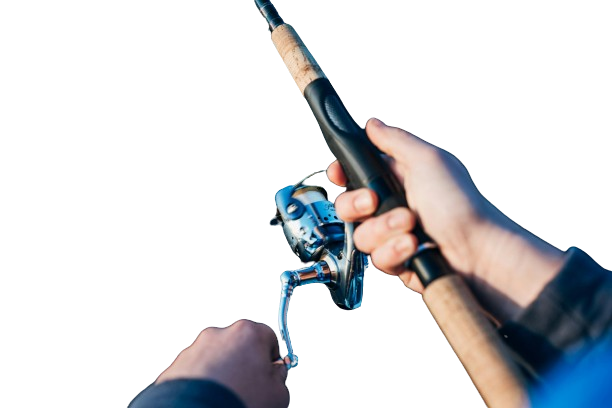
Selecting the Right Spot:
Before casting, it’s essential to identify promising fishing spots where pike are likely to be lurking. Look for areas with cover such as weed beds, submerged vegetation, rocky shorelines, or drop-offs where pike may be hiding and waiting to ambush prey.
Casting Technique:
Start by positioning yourself at a comfortable distance from the target area. Hold your rod at about 10 o’clock or 2 o’clock position, depending on whether you’re casting with a spinning or baitcasting setup. Use a smooth, fluid motion to cast your lure or bait towards the target area.
Lure Presentation:
Once your lure or bait hits the water, allow it to sink for a moment before starting your retrieve. Depending on the depth of the water and the type of lure or bait you’re using, adjust your retrieve speed to mimic the natural movement of prey. Pike are often attracted to erratic, jerky movements, so vary your retrieve with pauses, twitches, and sudden changes in direction to trigger strikes.
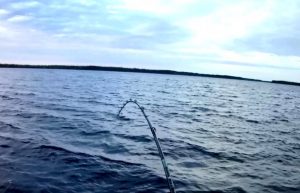 Retrieving Technique:
Retrieving Technique:
As you retrieve your lure or bait, keep your rod tip low to the water and maintain constant tension on the line. This allows you to feel any subtle strikes or bumps from pike. If you feel a sudden resistance or your line starts moving unexpectedly, set the hook with a quick, firm hookset to ensure a solid hookup.
Pay Attention to Strikes:
Pike are notorious for their aggressive strikes, often hitting lures with incredible force. Pay close attention to any sudden movements or vibrations in your rod tip, as these could indicate a pike strike. Be ready to react quickly and set the hook at the first sign of a bite.
Landing and Handling Pike:
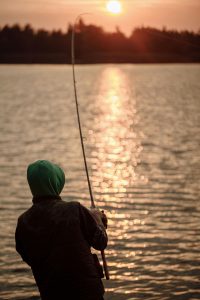
Once you’ve hooked a pike, carefully play it out and bring it close to the boat or shore. Use a landing net to safely scoop up the fish and avoid damaging your line or rod. Exercise caution when handling pike, as they have sharp teeth and can thrash violently. Use a pair of long-nosed pliers to remove the hooks and release the fish quickly and safely.
Techniques for Catching Pike: Trolling
Selecting the Right Equipment:
When trolling for pike, it’s essential to use sturdy equipment capable of handling the powerful strikes and runs of these predatory fish. Choose a medium to heavy-action trolling rod paired with a baitcasting or trolling reel equipped with a high line capacity and a smooth drag system.
Choosing the Right Lures or Baits:
Selecting the right lures or baits is crucial for successful trolling. Popular trolling lures for pike include large crankbaits, spoons, and spinnerbaits that mimic the appearance and movement of baitfish. Alternatively, live baits such as large minnows or suckers can also be effective when trolled behind the boat.
Adjusting Speed and Depth:
The speed and depth at which you troll can significantly impact your success. Start by trolling at a slow to moderate speed, typically between 2 to 4 miles per hour, and adjust your speed based on water temperature, weather conditions, and the activity level of the fish. Use depth finders or fish finders to monitor the depth at which pike are holding and adjust your lure or bait accordingly.
Paying Attention to Strikes:
While trolling, it’s crucial to remain vigilant and pay close attention to your rod tips for any signs of strikes. Pike are known for their aggressive strikes, often hitting lures with considerable force. If you notice a sudden movement or a rod tip bending, immediately stop the boat or slow down to allow the fish to take the bait fully before setting the hook.
Tips for Setting Up Your Fishing Rig for Pike
Choosing the Right Rod and Reel:
Selecting the appropriate rod and reel is crucial when setting up your fishing rig for pike. Opt for a medium to heavy-action rod that can handle the powerful strikes and strong runs of pike. Pair it with a durable baitcasting or spinning reel with a smooth drag system and a high line capacity to handle large fish.
Matching the Line and Leader:
Use a strong and abrasion-resistant fishing line in the 12 to 20-pound test range, depending on the size of the pike you’re targeting and the type of cover you’ll be fishing in. Additionally, use a sturdy wire leader to prevent pike from biting through your line, especially when fishing in areas with sharp teeth.
Choosing the Right Terminal Tackle:
Ensure you have the appropriate terminal tackle, including hooks, swivels, and weights. Use strong and sharp hooks in sizes ranging from 2/0 to 5/0, depending on the size of the baitfish you’re using and the size of the pike you’re targeting. Use barrel swivels to prevent line twist and add a sliding weight or jig head to control the depth of your presentation.
Organizing Your Tackle Box:
Keep your tackle box organized and well-stocked with a variety of lures, baits, terminal tackle, and tools. Arrange your tackle box by category or type of lure to quickly locate the right bait for the fishing conditions. Ensure you have extras of essential items like hooks, swivels, and leader material in case of break-offs or lost tackle.
Best Times of Year to Fish for Pike
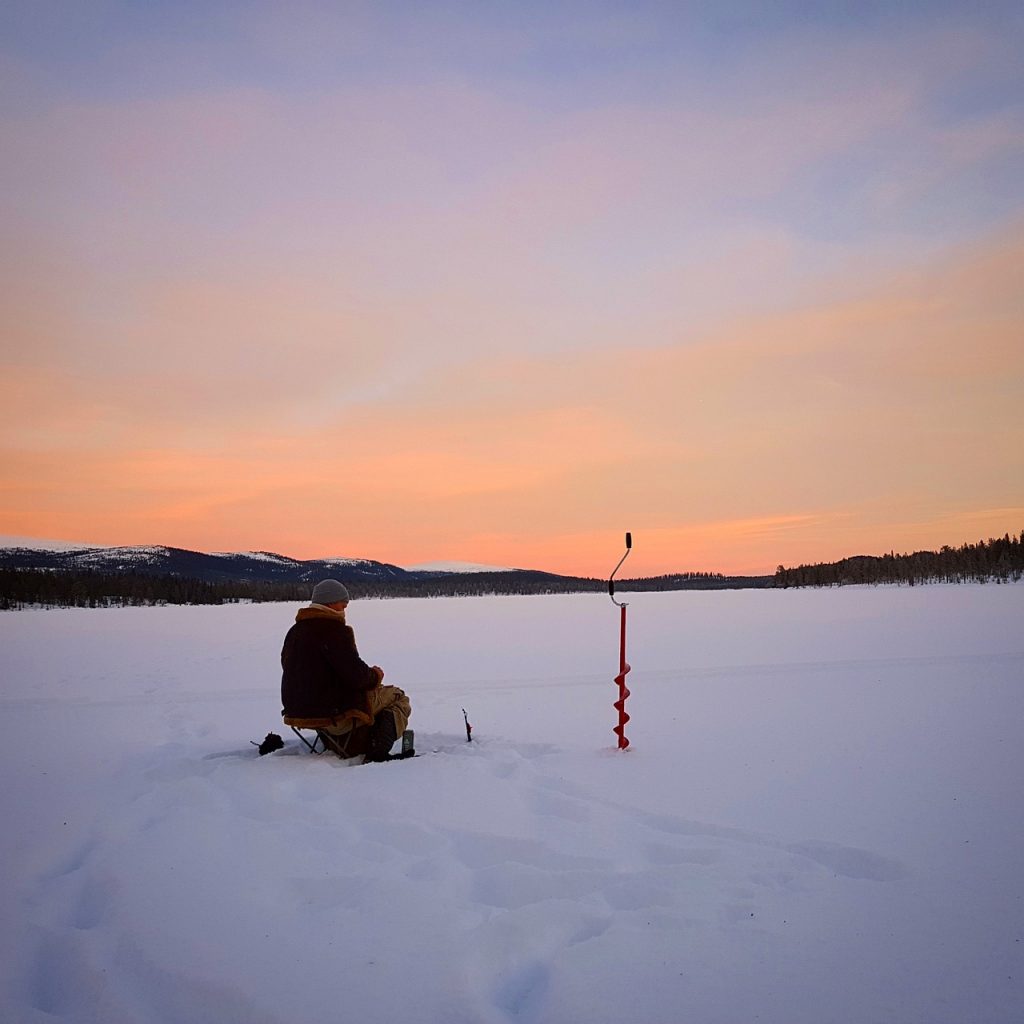
Spring:
Spring is arguably the best time of year to target pike, as they become increasingly active after the winter months. As water temperatures rise, pike move into shallow bays, marshes, and spawning areas to feed and reproduce. Look for pike in areas with emerging vegetation, as they use these areas for cover and ambush prey. Early spring, particularly during the pre-spawn period, can yield some of the largest pike of the year as they feed voraciously in preparation for spawning.
Summer:
During the summer months, pike can be found in a variety of habitats, including weed beds, rocky shorelines, and deeper water structures such as points and drop-offs. Early mornings and evenings are prime times to target pike, as they are most active during low light conditions. However, pike can be caught throughout the day by adjusting your techniques and targeting areas with ample cover and structure.
As temperatures rise, pike often seek cooler waters and can be found around deeper water structures such as points, drop-offs, and submerged humps. These structures provide cooler temperatures and good hunting grounds. Use deep-diving crankbaits, jigs, and weighted swimbaits to reach these depths effectively. A fish finder can be a valuable tool to locate these structures and identify the presence of pike.
Fall:
Fall is another excellent time to fish for pike, as cooling water temperatures trigger feeding frenzies in preparation for the upcoming winter months. As water temperatures drop, pike become more aggressive and will feed heavily to store energy for the winter. Focus on areas with abundant baitfish, such as shallow flats, weed edges, and creek mouths. Crankbaits, spinnerbaits, and large swimbaits are effective lures for enticing fall pike.
Winter:
While winter fishing for pike can be challenging, it can also be incredibly rewarding for dedicated anglers. As lakes and rivers freeze over, pike congregate in deeper water areas such as channels, holes, and under ice structures. Ice fishing for pike typically involves using tip-ups or jigging with large spoons or swimbaits. Early mornings and late afternoons are the most productive times to target pike during the winter months.
Pike Fishing Regulations and Legal Considerations
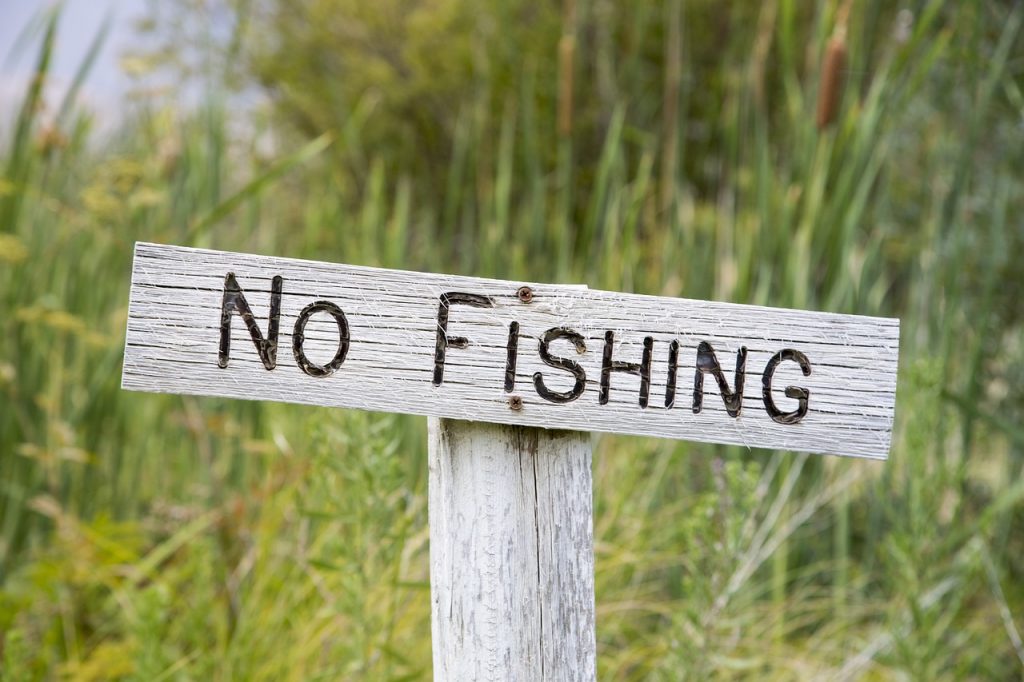
Check Local Regulations:
Before heading out to fish for pike, it’s crucial to familiarize yourself with the fishing regulations specific to the area you’ll be fishing in. These regulations can vary significantly between regions and may include restrictions on catch limits, size limits, seasons, and specific gear types allowed.
Know the Size and Bag Limits:
Many jurisdictions have size and bag limits in place to help maintain healthy pike populations and ensure sustainable fishing practices. Size limits typically specify the minimum and maximum lengths of pike that can be harvested, while bag limits restrict the number of pike that can be kept per angler per day.
Respect Catch-and-Release Practices:
Catch-and-release practices are essential for conserving pike populations, especially for larger specimens that contribute to breeding and genetic diversity. When practicing catch-and-release, handle fish with care, use barbless hooks to minimize injury, and release fish promptly to minimize stress and maximize survival rates.
Use Legal Fishing Gear:
Ensure that you are using legal fishing gear and techniques permitted by local regulations. Some areas may have restrictions on certain types of gear, such as live bait or snagging hooks, to protect vulnerable fish populations or sensitive habitats.
Obtain Necessary Permits or Licenses:
In many jurisdictions, anglers are required to obtain a fishing license or permit before fishing for pike or any other species. These licenses help fund conservation efforts and ensure that anglers are aware of and abide by fishing regulations. Make sure to have a valid fishing license and carry it with you while fishing.
Be Aware of Protected Areas:
Certain areas may be designated as protected habitats or conservation areas where fishing for pike is prohibited or restricted. These areas are essential for preserving biodiversity and sensitive ecosystems, so be sure to check for any regulations or closures in place before fishing.
Common Mistakes to Avoid When Pike Fishing
Using Improper Gear:
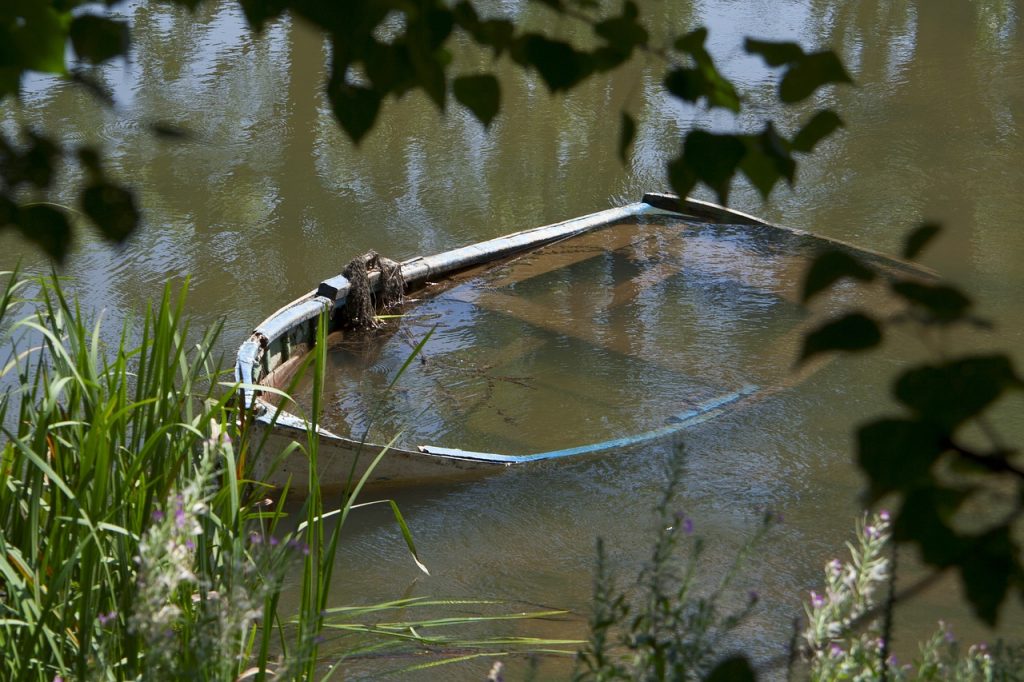
One of the most common mistakes anglers make when fishing for pike is using gear that is too light or inadequate for the task. Pike are strong and aggressive predators that require sturdy equipment capable of handling their powerful strikes and runs. Using inappropriate gear can result in lost fish and frustration.
Ignoring Leader Material:
Pike have sharp teeth that can easily cut through fishing line, especially monofilament or fluorocarbon. Failing to use a strong and abrasion-resistant leader material, such as wire or heavy fluorocarbon, increases the risk of losing fish to line breakage. Always use a suitable leader material when targeting pike to prevent lost fish.
Neglecting Proper Hookset:
Proper hookset technique is critical when fishing for pike. Many anglers make the mistake of either setting the hook too softly, resulting in missed opportunities, or jerking too aggressively, potentially pulling the hook out of the fish’s mouth. Practice a smooth and controlled hookset to ensure a solid connection with the fish.
Fishing in the Wrong Locations:
Choosing the wrong fishing spots can significantly impact your chances of success when targeting pike. Avoid fishing in areas with little to no cover or structure, as pike are ambush predators that rely on cover to hide and ambush prey. Instead, focus on areas with vegetation, submerged structures, or drop-offs where pike are likely to be lurking.
Overlooking Stealth and Patience:
Pike can be easily spooked by noisy or intrusive movements, so it’s essential to maintain stealth and patience when fishing for them. Avoid making loud noises, or moving too quickly around the boat. Take your time and make deliberate, quiet movements to avoid scaring away wary pike.
Mishandling Fish:
Improper handling of caught pike can lead to injury to both the fish and the angler. Pike have sharp teeth and powerful jaws, so always handle them with care to avoid injury. Use a landing net to safely bring the fish aboard, and use a pair of long-nosed pliers to remove hooks while keeping your fingers away from the fish’s mouth.
Advanced Tips and Strategies for Pike Fishing
Targeting Big Fish with Big Baits:
When targeting trophy-sized pike, consider using larger baits that can entice larger fish. Big pike often prefer larger prey, so using oversized swimbaits, jerkbaits, or even live baitfish can increase your chances of hooking into a monster pike. Be prepared for fewer bites, but the potential for landing a true trophy is worth the patience.
Experimenting with Retrieval Speeds and Pauses:
Pike can be finicky and may prefer different retrieval speeds depending on factors like water temperature and weather conditions. Experiment with varying retrieval speeds, including slow retrieves, erratic jerks, and pauses, to trigger strikes from hesitant or inactive pike. Pay attention to which retrieves produce the most bites and adjust accordingly.
Fishing Deep Structure and Thermoclines:
During the warmer months, pike often seek cooler temperatures in deeper water, particularly near thermoclines where there’s a sudden change in water temperature. This behavior is driven by the need to regulate their body temperature and find an optimal environment for hunting. Understanding this seasonal shift can significantly improve your chances of success in pike fishing.
Understanding Thermoclines
Thermoclines are layers within a body of water where the temperature changes rapidly with depth. In summer, surface water heats up, creating a warm upper layer. Below this, the temperature drops sharply at the thermocline, leading to a cooler, deeper layer. Pike often position themselves just below this thermocline to take advantage of the cooler water, which provides a more comfortable habitat and supports a higher concentration of dissolved oxygen.
Targeting Deep Structures
To locate pike in these deeper waters, focus on underwater structures that offer both cover and feeding opportunities. Submerged humps, ledges, and drop-offs are prime locations where pike may be holding. These structures provide ambush points where pike can lie in wait for prey. Using a fish finder can help identify these underwater features and the presence of fish.
Choosing the Right Lures
To effectively reach pike in deeper water, select lures designed for deep diving. Deep-diving crankbaits, jigs, and weighted swimbaits are excellent choices. Deep-diving crankbaits are particularly effective because they can be cast far and retrieved to reach significant depths. Jigs, with their vertical presentation, are perfect for fishing directly over structures like humps and ledges. Weighted swimbaits, with their lifelike action, can be retrieved slowly along the bottom, mimicking the natural movements of baitfish.
Techniques for Deep Water Fishing
Fishing in deeper water requires different techniques compared to shallow water fishing. When using deep-diving crankbaits, a steady retrieve is often most effective, but varying the speed and incorporating pauses can trigger strikes. For jigs, a vertical jigging motion, where the lure is lifted and then allowed to fall back down, can entice pike. With weighted swimbaits, a slow and steady retrieve along the bottom is key, ensuring the lure stays within the strike zone.
Adjusting to Conditions
Pay attention to the time of day and weather conditions, as these can influence pike behavior. Early morning and late evening are typically the best times to fish, as pike are more active during these cooler parts of the day. On overcast or windy days, pike might move closer to the surface, so adjusting your approach to slightly shallower depths might be beneficial. Conversely, on bright, sunny days, focusing on deeper waters where pike retreat to avoid the heat is more effective.
Patience and Persistence
Fishing for pike in deeper water requires patience and persistence. It might take longer to locate and catch fish, but the reward is often worth the effort. Use your fish finder to identify promising spots and spend time thoroughly working each area. Don’t be discouraged by slow periods; pike can be finicky, but with the right approach, you can land impressive catches. By targeting deep structures and using appropriate lures and techniques, you can effectively fish for pike during the warmer months. Understanding their behavior and adjusting your strategy to match their habits will significantly increase your success rate.
Utilizing Live Bait for Finicky Fish:
When pike are reluctant to strike artificial lures, presenting live bait can be a game-changer. Live baitfish such as suckers, shiners, or large minnows can be irresistible to pike, especially in heavily pressured waters or when fish are feeding selectively. Rig live baitfish on a sturdy wire leader and allow them to swim naturally to attract nearby pike.
Employing Top water Tactics for Explosive Strikes:
Top water lures can elicit explosive strikes from aggressive pike, especially during low light conditions or when fishing in shallow, weedy areas. Experiment with surface lures such as poppers, prop baits, or buzz baits, and vary your retrieval speed and cadence to trigger vicious surface strikes. Be prepared for heart-pounding action and adrenaline-fueled battles.
Fine-tuning Your Presentation with Attractive Colors:
Pike are often attracted to bright and flashy colors, particularly in stained or murky water conditions. Experiment with a variety of lure colors, including chartreuse, orange, red, and metallic finishes, to determine which hues are most effective on any given day. Additionally, consider incorporating contrasting colors or patterns to add visual appeal and trigger strikes.
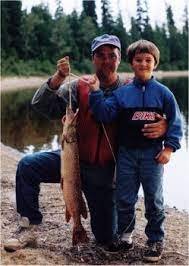 Conclusion: Enjoying the Thrill of Pike Fishing
Conclusion: Enjoying the Thrill of Pike Fishing
In this comprehensive guide, we’ve covered everything you need to know to enhance your pike fishing experience. From understanding pike behavior and habitat preferences to selecting the right gear, lures, and techniques, you now have the knowledge and tools to pursue these elusive predators with confidence.
Remember to always check local regulations and obtain any necessary permits before heading out to fish for pike. Respect the environment and practice responsible angling to ensure the sustainability of pike populations for future generations.
Whether you’re a beginner angler looking to hook your first pike or an experienced angler seeking to refine your skills, there’s always something new to learn and explore in the world of pike fishing. By applying the tips, techniques, and strategies outlined in this guide, you’ll be well on your way to enjoying memorable adventures and thrilling encounters with one of freshwater fishing’s most prized species.
So grab your gear, hit the water, and embark on your next pike fishing adventure. Tight lines and happy fishing!
